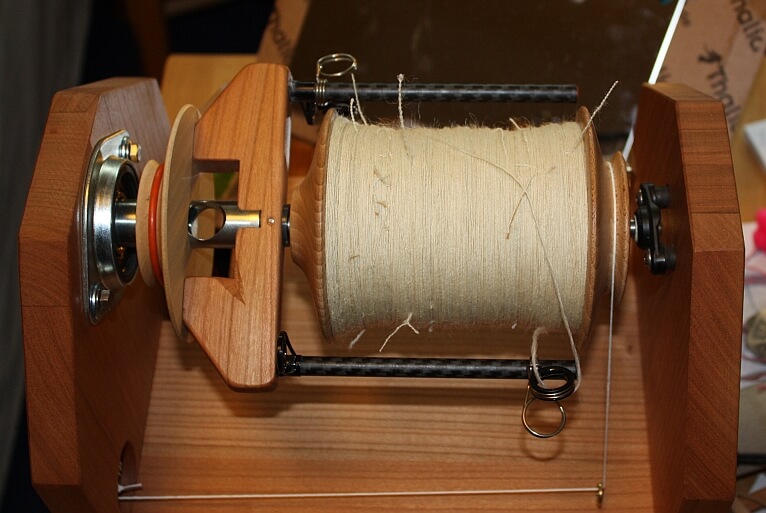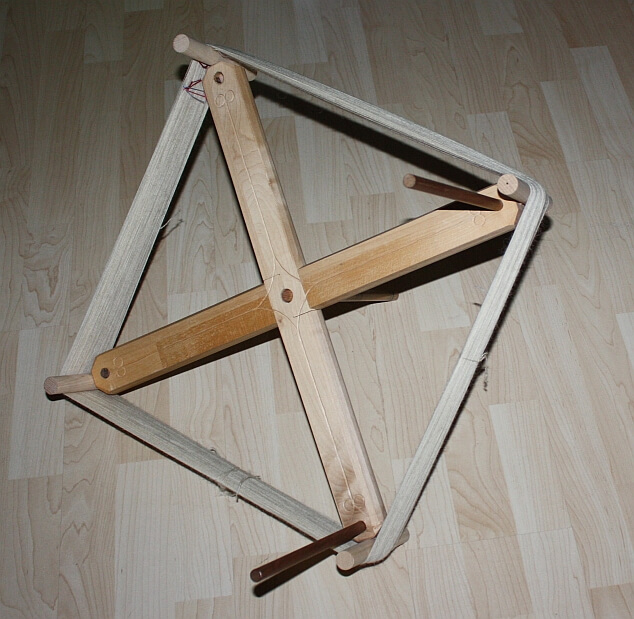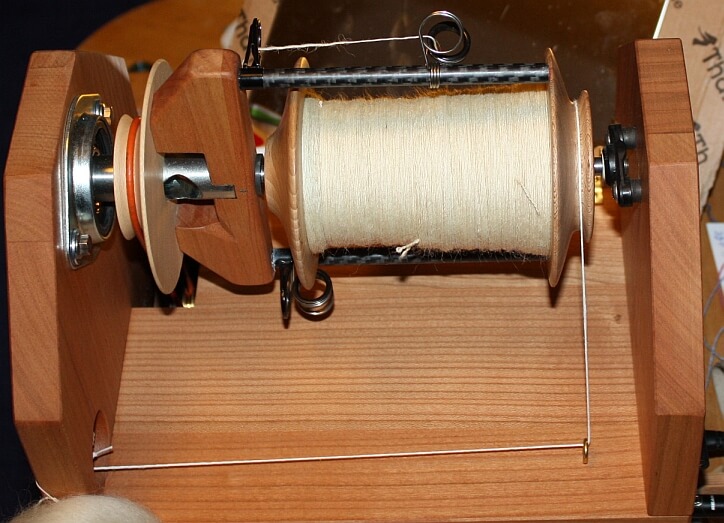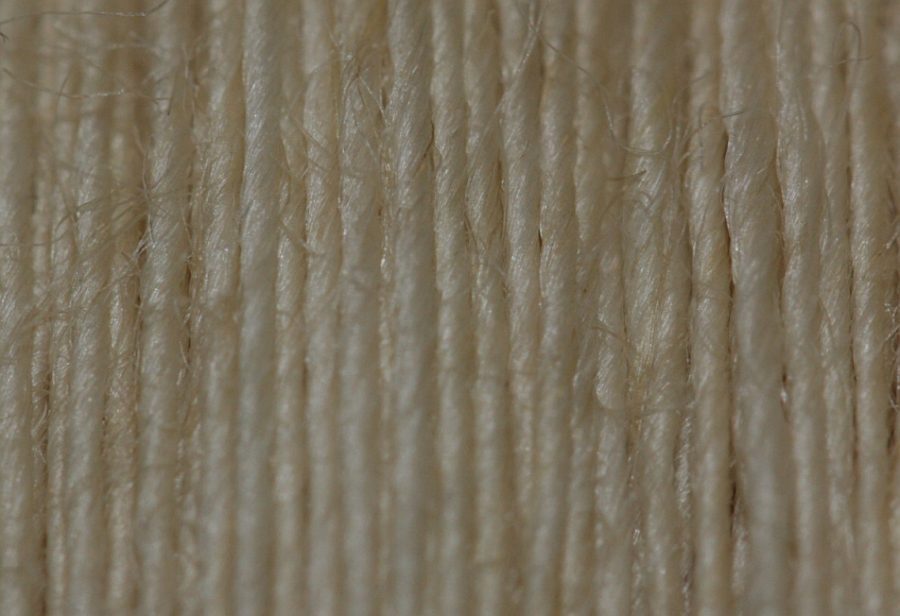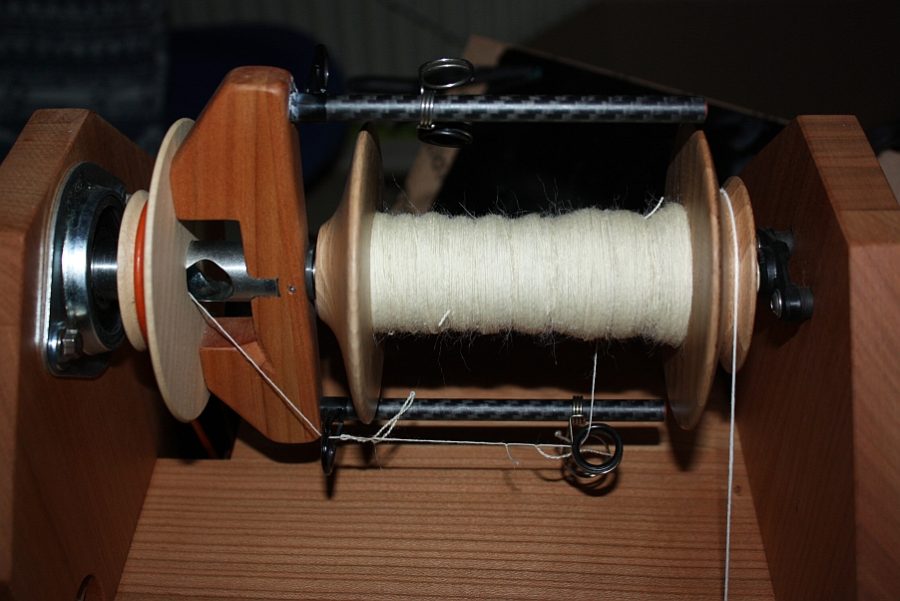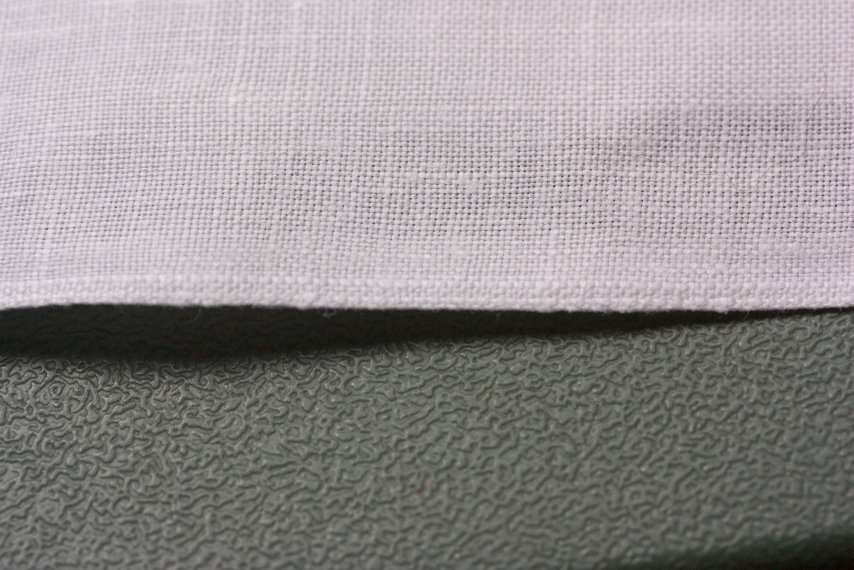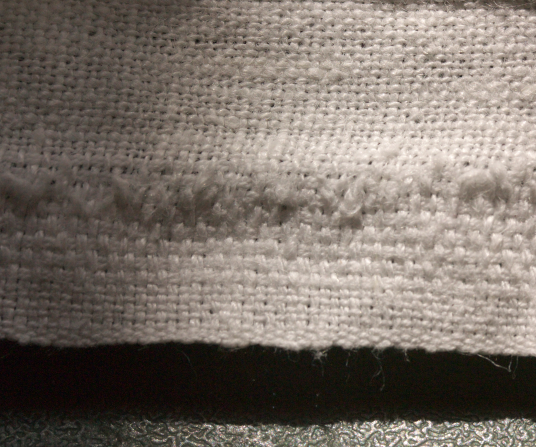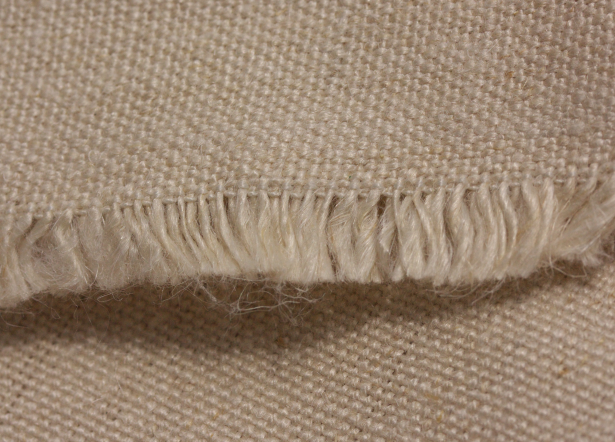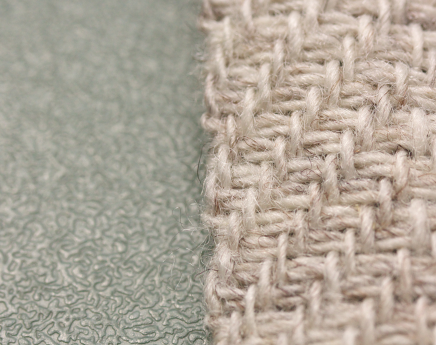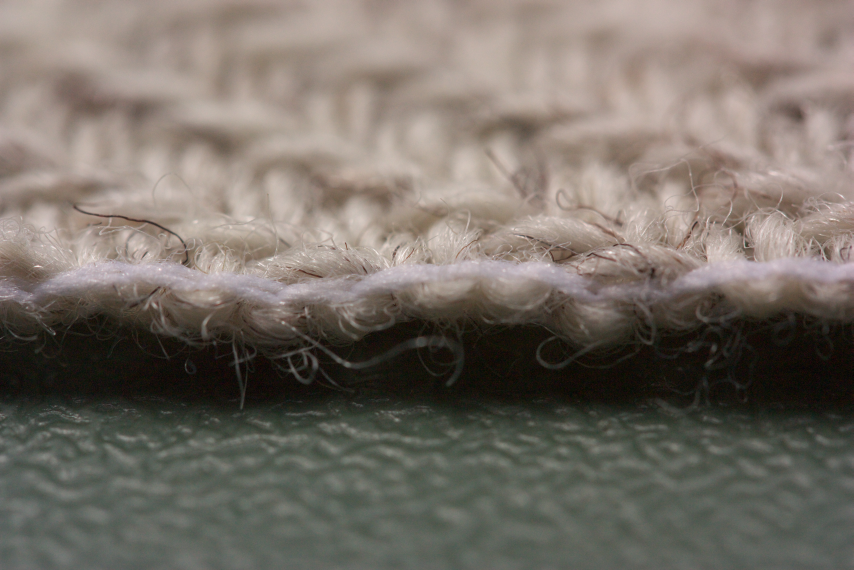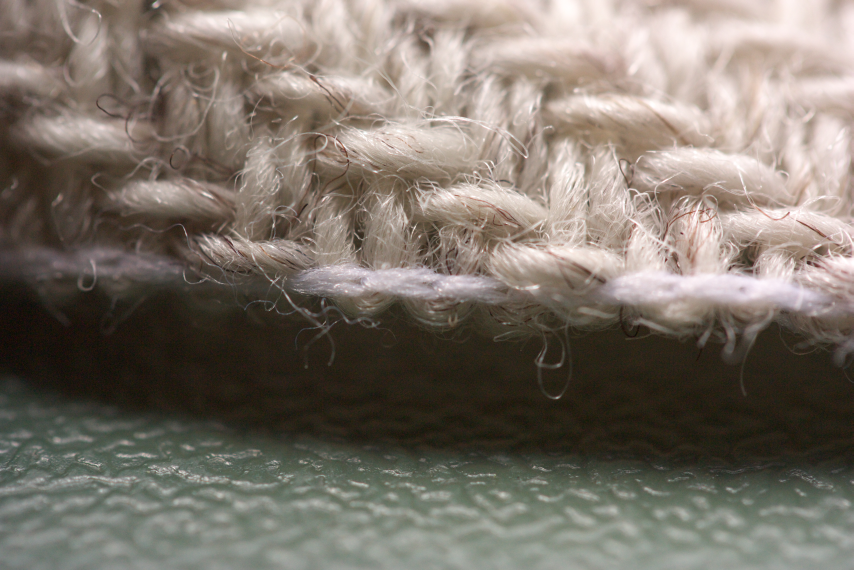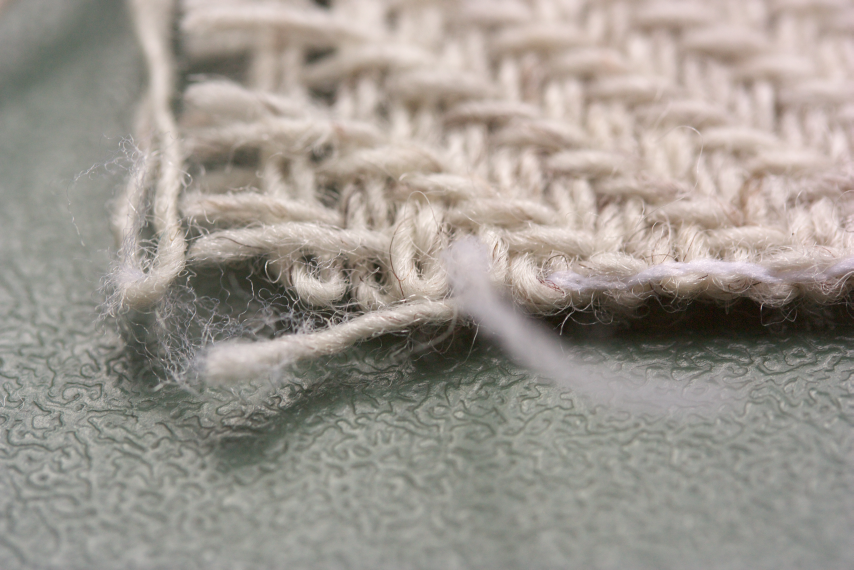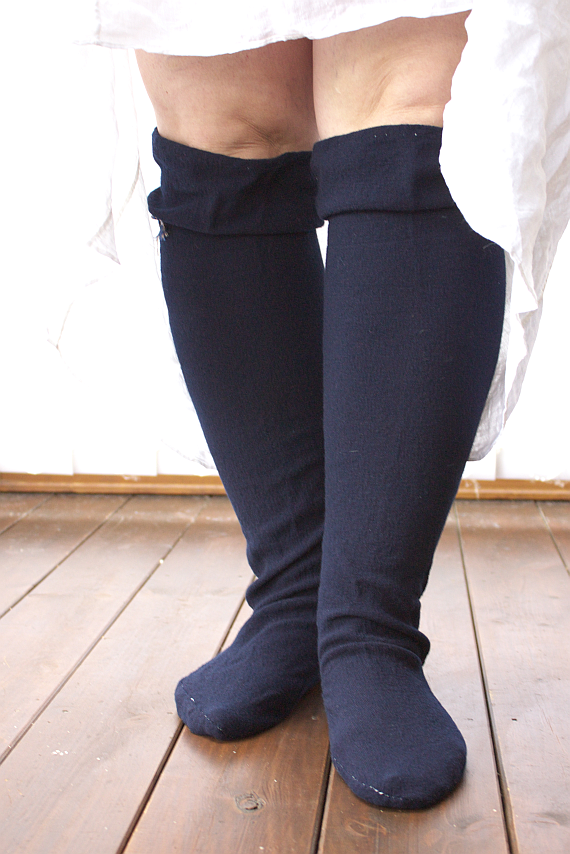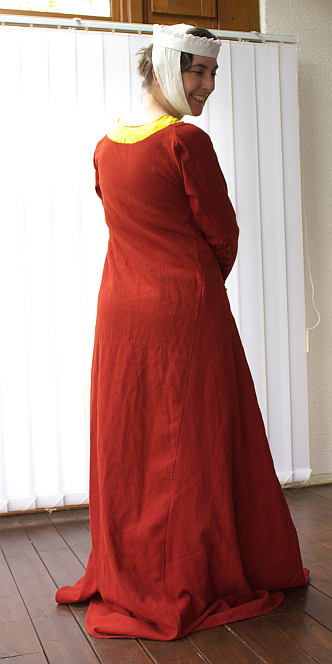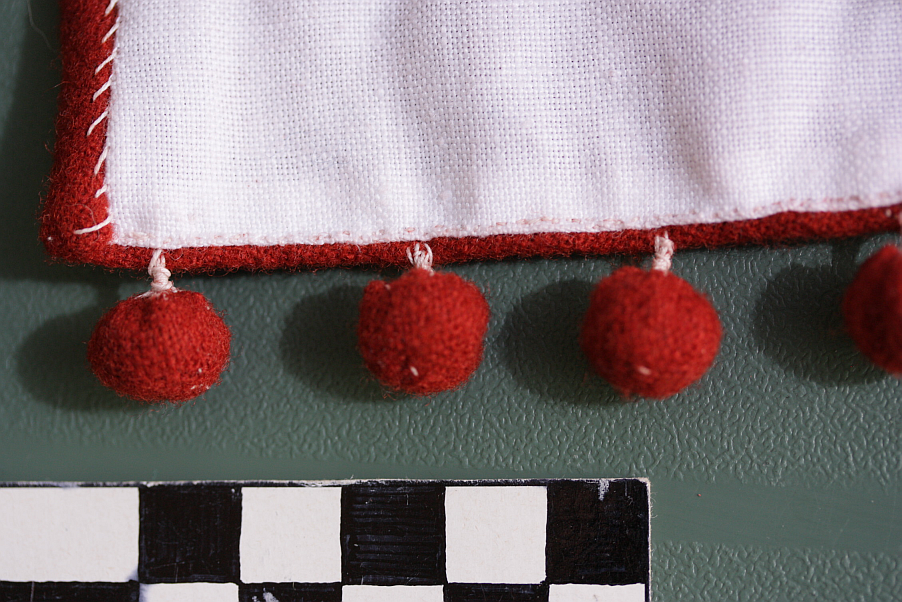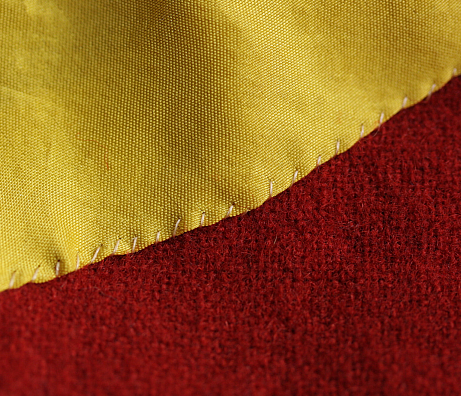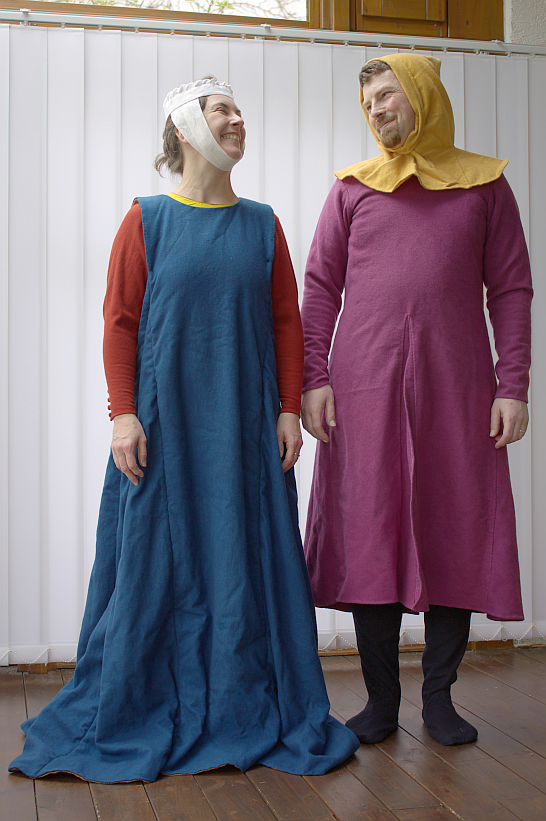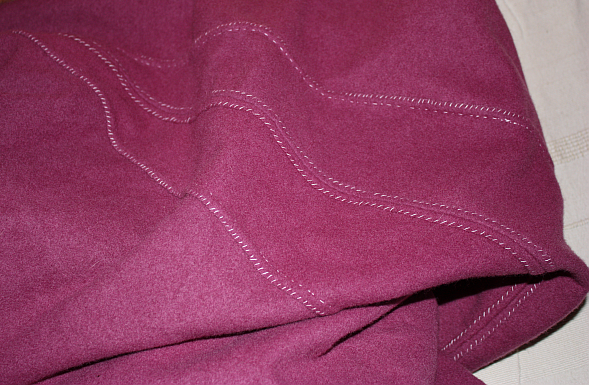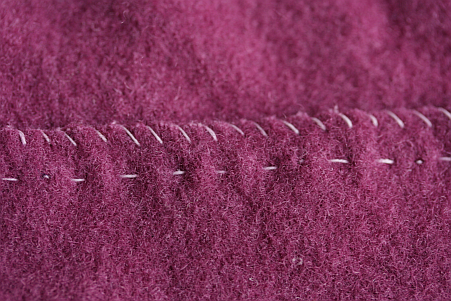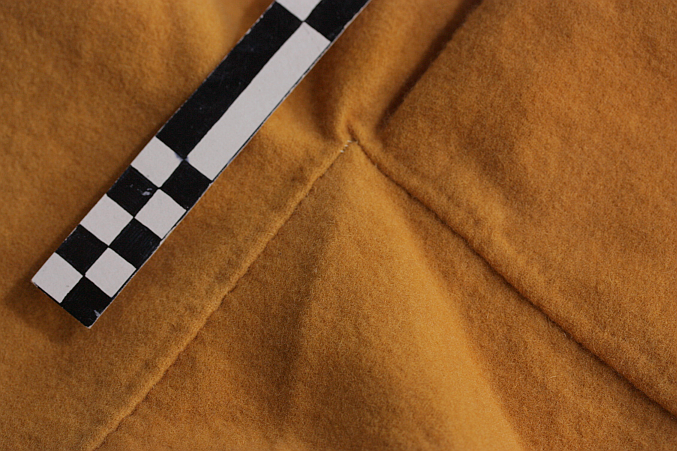Production spinning - as in making lots and lots of yarn, as consistently as possible, for a specific project - is a nice thing, but it's also a time-consuming task. So before you dive into a spinning project for a handwoven cloth or a hand-knitted sweater (and I'm not talking about a bulky baby sweater here), it is well worth investing some time and effort to make sure that you are not going to sink with your project half-way. So here are some things about production spinning that I find helpful - and maybe you will, too.
- Have a solid idea of what you want.
In case where you are spinning for a fabric reproduction, that is rather easy as it is predetermined by the original. When you are spinning for something else, though, you are free to decide what you want - lots of twist, and thus a resilient and hard yarn? or rather a softer yarn that might not be as durable? Single or plied? Thick or thin? You might want to do a few test runs to find out if the thing you are spinning really suits the thing you want to make with it later - you don't want to invest many, many spinning hours to sit on a lot of handspun that you can't use afterwards. - Get or make yourself a reference thingie.
Once you have figured out what you want, make sure you'll be able to spin exactly that kind of yarn. Yes, that sounds like a Thank You Captain Obvious, but chances are that you might drift away from the yarn you make at the start. Changes in fitness level, concentration level, the amount of attention you pay, how tense and excited you are at the start versus a bit in - all these can affect the yarn you are spinning. Danger of drifting off what you planned is higher if the yarn you are aiming for is further away from your "mindless spinning standard yarn" - so you will want something to compare your current spinning to, allowing you to recalibrate in case of drifting. This something can be a spinning angle and thickness card like the one I use, or a sample piece of your test yarn stuck onto a card. Whatever you use, it should allow you to compare both the thickness and the amount of twist of your current yarn with your goal yarn. Use it periodically, for instance when you need to stop spinning anyway because you need to have a sip of tea, or change the hook on the spinning wheel flyer. Making these checks a habit will not lose you a lot of time, but might just save you a bad disappointment later. - Be consistent.
Hand-spun yarns will always have irregularities; it's in the nature of the thing and cannot be avoided. Sometimes they are caused by the fibres, sometimes by a bit of inattention of the spinner, or a snag by the tool. They just do happen.
However, you can try keeping them down as much as possible by having as much consistency as possible. Set up your workplace the same way, have the same good suitable lighting, the same position or seat, prep your fibre the same way - it will all help. - Prepare your fibre.
Speaking of fibre prep, this is helpful even if you are working with industrially prepared fibre (just like I do for those projects, usually). Your batt or top will have sat for a while before you take it into your hands for spinning, and it might be compressed; if it was dyed after combing or carding, it will definitely be slightly felty. Even if you don't see any compression, though, it is a good idea to loosen up the fibres by pre-drafting them.
For the pre-drafting, take the top or the strip of batt, grab the end and gently pull on the fibres until they start to move apart. Change your grip to the place where they moved, and repeat the procedure, working your way along your top or batt. This loosens up the compressed fibres and makes your drafting for spinning much smoother and easier.
For better consistency, I use a diz for that (though I am generous and call everything with a hole that I use for drafting a diz). The diz also clearly indicates when I am nearing the end of the pre-drafted part of my top (I don't tear off pieces if I can avoid it) and have to pre-draft some more. - Watch yourself, and take breaks as necessary.
This ties in with the drifting bit - spinning, especially if it is not your can-do-it-in-my-sleep yarn, takes concentration. After a while, this will result in less consistent drafting, more variation, slower speed or something else, or a combination of whatever you are prone to do when your attention gets worse. So keep an eye on your spinning efficiency, and take a break, or stop for the day when the symptoms get bad enough. (You get to decide yourself when that is. If you don't care about a bit more variation in the yarn and have to get it finished soon, you will obviously have a different break-off point than somebody trying to go for the perfect yarn and having lots of time to do that.) - Calculate for enough time.
Speaking of breaks, and stops - make sure you have calculated for enough time for your spinning project. Spinning is not a fast thing, and you might not be able to spend several hours per day on it either, depending on the project, your other work or obligations, and your level of practice.
Also - when calculating approximate work time needed, don't forget that you also have to get the yarn off the bobbins and set the twist. Skeining off a few hundred or even a few thousand metres of yarn is not done in split seconds! - Get (and make!) enough material.
That should be obvious, but it is worth mentioning it - when you are buying your material, make sure you get enough. Especially if you are doing high-twist yarns, they will have more weight at the same thickness than low-twist, fluffy yarns... and running out of material just before the end is not only awkward, but also annoying.
Speaking of which - when spinning specific amounts, go a little over as well to make sure you have a bit of spare in case there are more breaks that need to be fixed, or something else goes wrong. Yes, theoretically you could just spin up more when it is needed, but in practice... that is also really annoying. And if you are like me, you will want to be finished with that step at some point!




